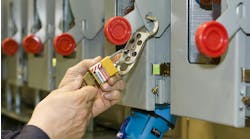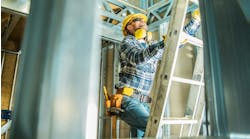To get the job done, electricians may need to work at a height or below ground. At times, they may also need to perform their tasks in a confined space—which presents certain risks. For example, electricians may need to be lowered down into a vault.
Confined spaces, as defined by the Occupational Safety and Health Administration (OSHA) meet the following three criteria:
- They are large enough for a worker to enter it.
- They have limited or restricted means of entry and exit.
- They are not meant for continuous occupancy.
If a confined space meets the following criteria, it is considered a “permit-required confined space,” according to OSHA.
- Contains or could contain a hazardous atmosphere.
- Contains a material that has the material for engulfing an entrant.
- Has an internal configuration that could trap or asphyxiate an entrant with converging walls or a sloping floor that tapers to a smaller cross-section.
- Contains another recognized health hazard.
For example, electricians specializing in residential construction may need to work in crawlspaces or attics in extreme heat, posing safety hazards.
To help employers to recognize confined spaces, OSHA created an online tutorial. View the video below.



